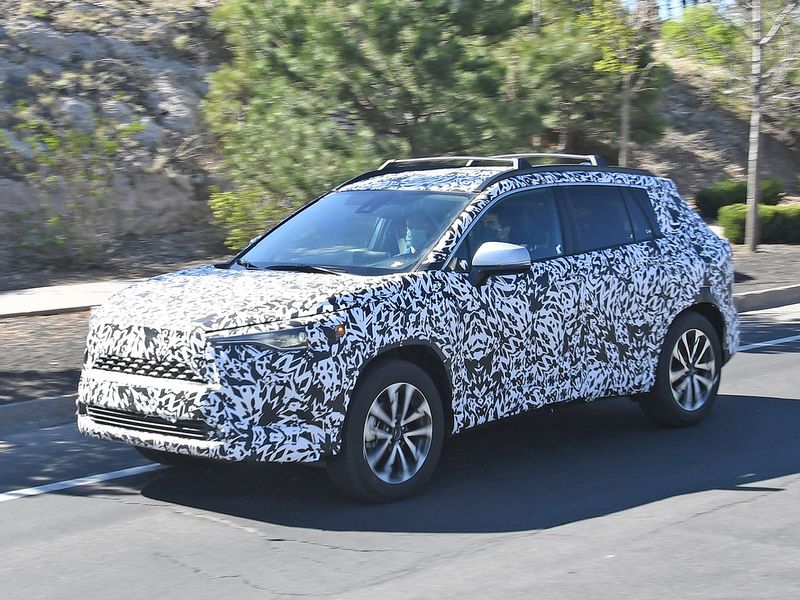
Spy photographers have caught a first glimpse of the North American version of the new 2022 Toyota Corolla Cross, a subcompact crossover the Japanese automaker will build beginning this year at a new joint-venture factory with Mazda in Alabama.
Like other automakers doubling up in the subcompact-crossover segment, Toyota plans to sell the Corolla Cross alongside the C-HR, at least for now. A similar vehicle with the same name debuted in Thailand in summer 2020, though the U.S. version is expected to be slightly different.
The subcompact-crossover market is on fire and continues to attract new entries such as the Chevrolet Trailblazer, Buick Encore GX, Kia Seltos, Mazda CX-30 and Hyundai Venue.
U.S. sales in the segment grew 4.8 percent to nearly 900,000 in 2020, when the overall market declined amid the pandemic, and another 44 percent in the first quarter, making it the third-biggest utility segment — mass market or luxury — behind midsize and large crossovers.
The Corolla Cross, built on the automaker’s modular TNGA-C platform, is expected to be smaller than the popular RAV4 and be powered by a 1.8-liter inline-four engine paired to a CVT, making an expected 140 hp and 129 lb-ft of torque. A hybrid version also is expected considering the automaker’s pledge to offer a hybrid version of each of its nameplates.
Toyota is expected to position the vehicle in what it considers white space above the C-HR but below the RAV4. The Corolla Cross is expected in U.S. dealerships by year-end, though timing remains unclear as it may slip into early 2022 given ongoing production issues.
It’s the second time in recent decades that Toyota has leveraged the Corolla name on a new model. The company marketed the Corolla Matrix, a hatchback, starting in 2003 until output ended in 2013.
Toyota’s existing crossovers in the lower end of the utility space are miles apart in terms of popularity in the U.S.: Through April, Toyota has sold 155,150 RAV4s in the U.S., up 37 percent, compared with just 15,643 C-HRs, an increase of 26 percent.

